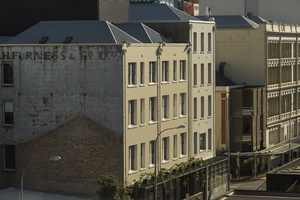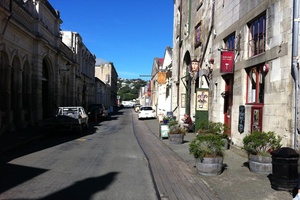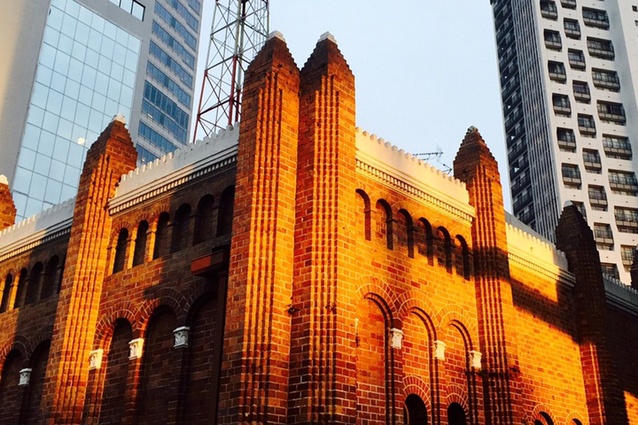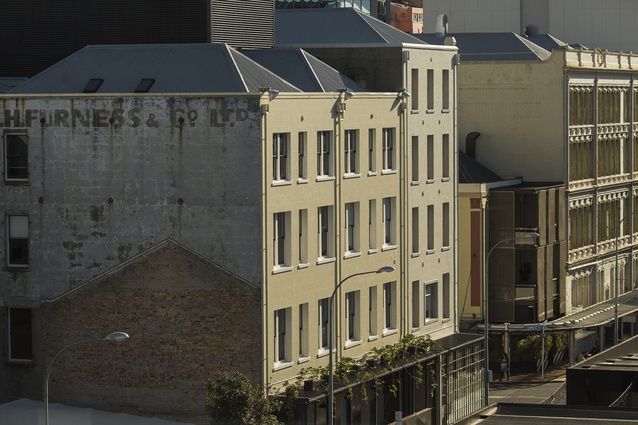The economics of heritage preservation
Bruce Petry is a conservation architect and the director at Reverb, an Auckland-based heritage consultancy. A specialist in New Zealand heritage management, he has undertaken a wide range of architectural and urban conservation projects, including Britomart, Auckland Art Gallery and the adaptive re-use of the Rob Roy Hotel.
I first attended a workshop with the compelling Donovan Rypkema in late 2010, and came away fired-up to make a difference in the way we managed our historic places in New Zealand. When I heard Donovan again on 10 March 2015, his message was the same, but I am disappointed to say the New Zealand heritage sector is no further ahead.
So I’m asking these two questions: Why is that? And, what more I can do differently to ensure his good advice is not wasted a second time?
The easy manner in which Donovan reels off statistics is very convincing and persuasive, and it made me wonder: ‘could we generate similar stats for a New Zealand situation?’ But no, it is not that easy. So then I asked myself: ‘What would it take, and who would be the best organisation to generate this work? And: ‘What sort of questions do we need to ask?’
It seems to me that the information gather would fall across a number of portfolios such as:
- MBIE: Ministry of Business, Innovation & Employment
- Ministry of Culture & Heritage
- Department of Conservation
- Heritage New Zealand, as well as some of the larger Councils.
How can we prove that investment in heritage projects or in the adaptive re-use of existing buildings, can increase jobs and raise the level of household income? We know that working on historic places, or being involved in traditional methods of construction requires increased skills, and that this means potentially higher hourly rates.
But how can we show this in clear economic case studies that can influence government policy? We urgently need comparative analysis that confirms the positive effects that money spent within the preservation sector has on household income, trades training and the tourism sector.

Donovan Rypkema’s message seems very straightforward. The five main drivers/measures of heritage economics are:
1. Jobs and household income
2. Centre city revitalisation
3. Heritage tourism
4. Property values
5. Environmental measures
It is critical that the heritage sector start lobbying for the research information that promotes a greater understanding of the wider economic impact that the preservation of historic places has on the New Zealand economy, particularly in the areas of increasing household income through increasing skills, and within the tourist sector.
What we need is data on four key areas:
1. JOBS AND HOUSEHOLD INCOME
The most important measure in any economy is the number of jobs being created and the level of household earnings. Donovan has provided some interesting figures that establish that:
Historic rehabilitation is a relatively labour intensive activity that provides good wages, particularly for those without advanced formal education.
He breaks down employment figures into sectors such as: manufacturing, hospitality, agriculture and tourism. He then divides the income generated by each sector by the number it employs, to establish an income per job total that can be compared. Through this method he has established, for the US state of Utah:
Historic preservation creates more jobs per $1 million of output than 84 percent of Utah industries, and more income per $1 million of output than 90 percent of the same industries.
How easy would it be to get similar figures for New Zealand and start to have a similar debate here?
2. CITY-CENTRE REVITALISATION
How can the heritage sector demonstrate the increasingly recognized process of town centre revitalisation as a viable, cost-effective approach to local economic development?
We need to clearly illustrate that communities that have prioritised the unique (often historic) character of their town centres as part of revitalization projects:
have not only achieved substantial economic growth: they have established a strong identity that has led to further economic opportunities.
In the USA the Federal Government provides investment, by way of “tax credits”, for the rehabilitation of historic places - which is equal to 20 percent of the amount invested. This applies to rehabilitation expenditures, but not acquisition costs. It is available for commercial and income-producing properties, but not for personal real estate investments.

Is this a good model for New Zealand to adopt, or certainly to expand the current funding system to include commercial and income-producing properties? At present many commercially operated properties, even those in the ownership of community charitable trust, do not qualify for Lottery Grants funding. This needs to be reviewed.
Many kinds of small business are located in historic urban centres. When asked, “Why did you choose this area?”, the number one reason was that it was an historic district. The second highest reason is the cost of occupancy. The third reason is the density and opportunity to connect with others in an accidental manner.
This is a pattern that repeats itself all over the world. Heritage buildings add to the competitive advantage of small business. Now, of course, there are some historic buildings around the world, for example New York or in London or Paris that are very expensive. But the vast majority of historic buildings are, in fact, affordable. One of the few costs that a small firm can affect, is that cost of occupancy.
This kind of natural incubation is a major role for heritage buildings which can be promoted.
3. HERITAGE TOURISM
We know from early Tourism New Zealand statistics that a very large number of visitors are not only coming to New Zealand for its landscape and wildlife, but also to participate in, and understand its cultural heritage, and that this is inextricably tied to our built environments, historic places and sites that tells the stories of how we live in New Zealand.
Attractors are often identified as “ticketable” or not - which means, do visitors pay to visit or not, or can you count the number of visitors. It is easy to quantify the “ticketable” aspect of the tourist industry, and there are statistics that are readily available. However it is the city and townscapes that attract tourists, which are more difficult to understand in economic terms but are as important in providing a good ”tourist experience” and, some may argue, more important.
How can we capture this information and value this in the same way as the “ticketable” attractions? Can we drill down from general New Zealand tourist figures to identify where “heritage tourism dollars” are going (just as we can in areas such as transport, accommodation, dining out, retail and entertainment)?.
How can we confirm that the general overseas description of “heritage tourists” is the same for New Zealand? In particular, that “heritage tourists” are:

- High-spending - these visitors tend to spend more than average travelers on accommodation, food, outdoor recreation, art, and handicrafts.
- Older - between 45 and 65, who have more time, are typically at the height of their careers, and have more discretionary income to engage in activities.
- Well-traveled - they not only travel to more places, but they travel more often and are potentially more discerning.
- Longer-staying - compared with other visitors. Often related to the fact they often have more time.
An interesting phenomenon noted by Rypkema, is that a very small percentage is spent at the site of historic interest but that the vast majority is spent on associated places such as surrounding restaurants, hotels and shops (Place Economics, Utah July 2013:7-8).
4. PROPERTY VALUES & COMPLIANCE COSTS
How can we get reliable figures around the reasons why properties are more sought-after in conservation or character areas (historic areas)?
Is it possible to identify average values calculated for single-family houses within “historic areas”, and compare those with the average values of single-family homes not in historic areas?
Charting these comparisons may help to show trends identified by Donovan that:
property values for houses in historic areas appreciated at a faster rate than other housing stock.
Both historic and non-historic house prices fluctuate, but houses in historic areas measurably less so. (Place Economics, Utah July 2013:10)
This would be an important point to show conclusively, that there was no evidence that being in either a character, conservation or historic area has a negative impact on property values and in fact has a potential advantage. If we can demonstrate this clearly, it would make the management and identification of such areas easier.
When claims are made that heritage identification, registration or listing, make changes to one’s home difficult, it would be useful to have figures to address this claim. Is it possible to examine the applications to alter a home that were presented and show that a large percent were approved without fuss, and that only a small percentage required additional information - with nearly all being approved? And, that less than one percent of all cases were denied? This would be a great study that Councils could prepare to support their scheduling process.
The bottom line is, we need more data.
For more information and articles on heritage preservation and adaptive re-use in New Zealand, visit the Reverb website.













